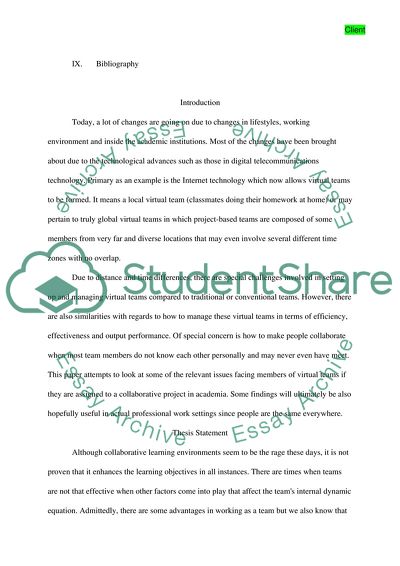Cite this document
(Advantages & Disadvantages of Collaboration Thesis Proposal Example | Topics and Well Written Essays - 1250 words, n.d.)
Advantages & Disadvantages of Collaboration Thesis Proposal Example | Topics and Well Written Essays - 1250 words. https://studentshare.org/education/1733114-advantages-and-disadvantages-of-collaboration-paper
Advantages & Disadvantages of Collaboration Thesis Proposal Example | Topics and Well Written Essays - 1250 words. https://studentshare.org/education/1733114-advantages-and-disadvantages-of-collaboration-paper
(Advantages & Disadvantages of Collaboration Thesis Proposal Example | Topics and Well Written Essays - 1250 Words)
Advantages & Disadvantages of Collaboration Thesis Proposal Example | Topics and Well Written Essays - 1250 Words. https://studentshare.org/education/1733114-advantages-and-disadvantages-of-collaboration-paper.
Advantages & Disadvantages of Collaboration Thesis Proposal Example | Topics and Well Written Essays - 1250 Words. https://studentshare.org/education/1733114-advantages-and-disadvantages-of-collaboration-paper.
“Advantages & Disadvantages of Collaboration Thesis Proposal Example | Topics and Well Written Essays - 1250 Words”. https://studentshare.org/education/1733114-advantages-and-disadvantages-of-collaboration-paper.


